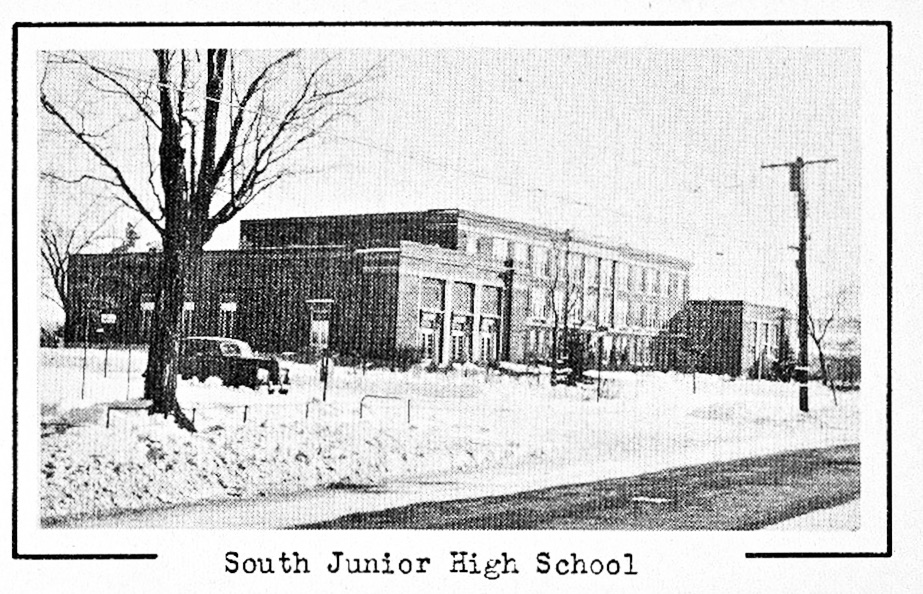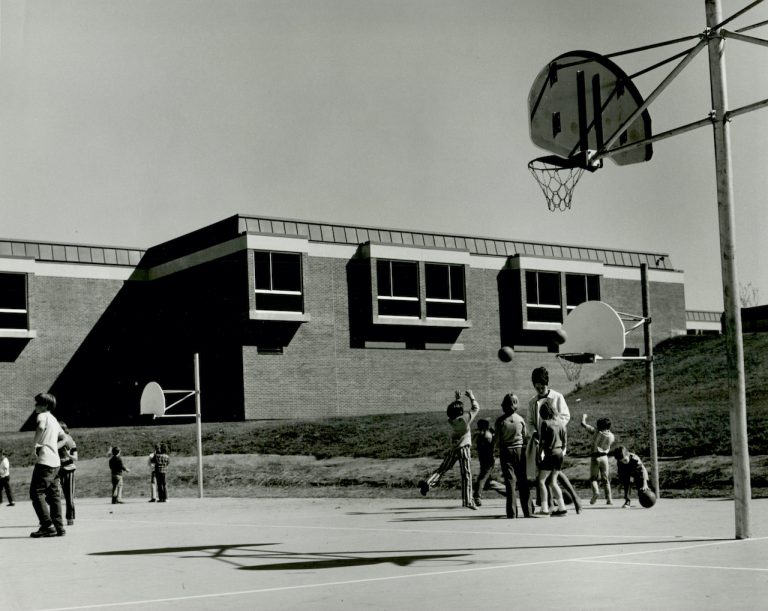South Junior High School, the First School Built On the Washington Street Campus, Eventually Became Case Junior
With its counterpart, North Junior on Watertown’s north side, South Junior High School was a result of overcrowding conditions in the city’s school district in the early 1900s. A survey conducted by the Teachers’ College of Columbia University in 1924 was the impetus to get the two schools approved and reorganized.

The major points from the survey posted in the December 23, 1924, Watertown Daily Times included–
The expenditure of $1,000,000 within the next three years, for the construction of two new junior high schools, on the north side of the river and one on the south side; the rebuilding of the old section of Boon street school, certain minor changes in the high school building and the construction of a new school to replace the Mullin street school.
That the board of eduction be elected by the people and that complete responsibility for the finances and well as management of the schools be placed upon this body.
Courses of study should be revised so as to provide more liberal education for children and for their more regular progress through the school system. There are too many children too old for the grade which they are found.
The erection of a south junior high school and a school to replace the Mullin street school will make it possible to absorb the Flower avenue enrollment in these new and other adjoining buildings.

Junior High School Program
At present, there are 846 children of grades 7, 8 and 9 living on the south side of the Black river. There are 375 children living north of the Black river who are attending the same-grades in the public schools.
In planning the buildings it will be wise therefore plan in terms of this increase in enrollment which has always followed the section of Junior High schools in other cities.
The north Junior High school should be placed to care for approximately 450 to 500 children. The south Junior High school should be planned to take care of 850 to 900 children. The building of these two schools will relieve the present overcrowding in the senior High School and will obviate the necessity of the continuation in use of undesirable rooms in the senior High school.
The 7th and 8th grades will be removed from the elementary schools thus leaving a number of rooms vacant in these elementary buildings.

By mid-1928, the architect’s revised plans for South Junior were accepted after eliminating 185,000 cubic feet from the school’s footprint without decreasing the overall number of rooms. North Junior, the smaller of the two schools, would be a two-story structure with 16 rooms while South Junior would have a total of 38, according to a July 10, 1928 article in the Watertown Daily Times.
Unlike North Junior, which ran ahead of the construction schedule, South Junior would fall behind and rush to catch up. In early August, the Watertown Daily Times would report—
The auditorium and gymnasium at the South Junior High School probably will not be ready for use when the school opens. The school building and class rooms will be ready for occupancy, however. Mr. Burdick (Raymond C. Burdick, Superintendent of Schools) said if they could get into the school class rooms at the beginning of the school term he would be satisfied. The contractor can go along with the gymnasium and auditorium and finish that work after the school is opened.

South Junior Gets A Name Change
The first principal of South Junior High School should be a familiar name to many: Harry D. Case. Dr. Case would go on to become the superintendent of schools in the Watertown City School District. In 1960, shortly after his retirement, the school board renamed the school in his honor, the first time in the city’s history that a school would be named after a person rather than the traditional street or section of the city.

The Decline of Case Junior And Eventual Replacement
In the early to mid-1980s, after North Junior High School consolidated their 7th and 8th grades into Case Junior while holding for one year the City School District’s ninth-grade classes (it would become known as Nine North that year.) Afterward, the ninth grade was moved to the Senior High School, the class of 1986 being its first freshman classes held at the school.
After a period of vacancy, North Junior would undergo renovations and eventually become North Elementary by the late 1980s and still holds classes there today. Case Junior wouldn’t be as fortunate.
In the mid-1990s, representatives from local engineering firm Bernier, Carr & Associates presented studies that outlined badly needed renovations at a cost of at least $21 million. Harold T. Wiley was also included, having opened some 20 years earlier in 1971 and in need of replacing its original roof with a project estimated to cost $646,000.

For the City School District, it was much like the dilemma posed nearly 50 years earlier when the old Watertown High School on Sterling Street was in need of expansion. Then, in 1948, it was an estimated $333,700 cheaper to build a new school on Washington Street than to remodel the then-current high school.
With a final estimated price tag of $26.9 million dollars, the new school, to be named Case Middle School, as well as some other associated projects involving the Washington Street campus, would get the go-ahead after the votes and funding were acquired.
Built behind the existing Case Junior School while classes were still held there, the new Case Middle School would open for classes in the fall of 2001. The spot of the old Case Junior school, demolished by then, would become a new athletic field at the front of Washington and Green Streets.
















